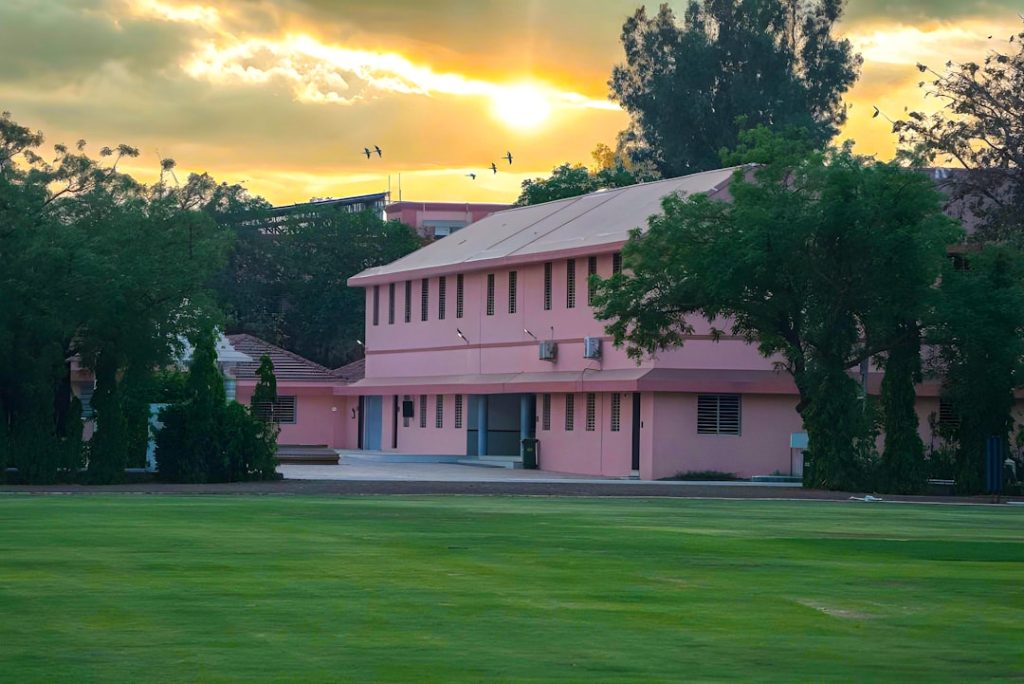Taking local flying lessons offers a multitude of advantages that extend beyond the thrill of soaring through the skies. One of the most significant benefits is the accessibility of training. Local flying schools often provide a range of aircraft and instructors, making it easier for aspiring pilots to find a program that fits their schedule and budget.
This localized approach allows students to familiarize themselves with the specific airspace and weather patterns of their region, which can be invaluable when it comes to practical flying. Moreover, learning in a familiar environment can reduce anxiety and enhance confidence, as students are more likely to feel comfortable navigating their local area. Additionally, local flying lessons foster a sense of community among aviation enthusiasts.
Many flying schools host events, workshops, and social gatherings that allow students to connect with fellow pilots and instructors. This camaraderie can be incredibly motivating, as students share their experiences, challenges, and triumphs in their journey to becoming licensed pilots. Furthermore, local schools often have ties to regional aviation organizations, providing students with networking opportunities that can lead to internships or job placements in the aviation industry.
The relationships built during this formative time can last a lifetime, enriching both personal and professional aspects of a pilot’s life.
Key Takeaways
- Taking local flying lessons allows you to learn in familiar surroundings and build connections with local aviation community.
- When finding the best local flying schools, consider factors such as instructor experience, aircraft availability, and safety record.
- During your first flying lesson, expect to learn about the aircraft controls, takeoff and landing procedures, and basic maneuvers.
- Understanding the costs of local flying lessons involves considering aircraft rental, instructor fees, and additional expenses like study materials and exams.
- To prepare for your local flying lessons, familiarize yourself with aviation terminology, study the flight manual, and get plenty of rest before your lesson.
- Choosing the right type of aircraft for your lessons depends on factors such as your goals, budget, and availability of aircraft at your local flying school.
- Safety tips for local flying lessons include thorough pre-flight inspections, staying updated on weather conditions, and communicating effectively with air traffic control.
- After completing local flying lessons, consider continuing your education in aviation through advanced training, obtaining additional certifications, or pursuing a career in aviation.
Finding the Best Local Flying Schools
When searching for the best local flying schools, prospective students should consider several key factors to ensure they receive quality instruction. First and foremost, researching the school’s reputation is crucial. Online reviews, testimonials from former students, and recommendations from local aviation clubs can provide insight into the school’s training methods and overall experience.
Additionally, prospective students should inquire about the qualifications and experience of the instructors. A school with seasoned pilots who have extensive teaching backgrounds can significantly enhance the learning experience. Another important aspect to consider is the fleet of aircraft available for training.
A well-maintained and diverse selection of aircraft can provide students with exposure to different flying experiences and technologies. Schools that offer modern equipment often have better safety records and can provide more advanced training options. Furthermore, prospective students should visit the school in person if possible.
This allows them to assess the facilities, meet instructors, and get a feel for the school’s culture. A welcoming environment can make a significant difference in a student’s comfort level and overall learning experience.
What to Expect During Your First Flying Lesson

The first flying lesson is often a mix of excitement and nervousness for many students. Typically, it begins with an introductory briefing where the instructor explains the basics of flight, including fundamental concepts such as lift, thrust, drag, and weight. This foundational knowledge is essential for understanding how an aircraft operates.
Students will also learn about the specific aircraft they will be flying, including its controls, instruments, and safety features. This initial classroom time helps demystify the flying process and prepares students for what lies ahead. Once the briefing is complete, students will head out to the aircraft for a pre-flight inspection.
This hands-on experience is crucial as it teaches students how to assess an aircraft’s condition before takeoff. The instructor will guide them through checking fuel levels, examining control surfaces, and ensuring that all safety equipment is in place. After completing the pre-flight checklist, students will climb into the cockpit for their first flight.
The instructor will typically handle takeoff and landing while allowing the student to take control during various phases of flight. This hands-on experience is exhilarating and provides a taste of what it feels like to pilot an aircraft.
Understanding the Costs of Local Flying Lessons
| Cost Category | Details |
|---|---|
| Flight Instruction | Hourly rate for instructor |
| Aircraft Rental | Hourly rate for renting the aircraft |
| Ground School | Cost for classroom instruction |
| Books and Materials | Cost for study materials and textbooks |
| Examination Fees | Cost for written and practical exams |
The costs associated with local flying lessons can vary significantly based on several factors, including location, type of aircraft used for training, and the school’s pricing structure. On average, students can expect to pay between $150 to $300 per hour for flight instruction, which typically includes both ground school and flight time. Additional costs may arise from materials such as textbooks, flight gear (headsets, charts), and examination fees for obtaining a pilot’s license.
Understanding these costs upfront is essential for budgeting effectively throughout the training process. Moreover, prospective pilots should be aware that many flying schools offer package deals or financing options that can help mitigate costs. For instance, some schools provide discounted rates for purchasing a block of flight hours in advance or offer payment plans that allow students to spread out expenses over time.
Additionally, students should consider potential hidden costs such as fuel surcharges or fees for using specific aircraft types. By thoroughly researching and discussing these financial aspects with school administrators, aspiring pilots can make informed decisions about their training investments.
How to Prepare for Your Local Flying Lessons
Preparation is key to maximizing the benefits of local flying lessons. Before starting lessons, students should familiarize themselves with basic aviation terminology and concepts. Resources such as online courses or introductory books on aviation can provide valuable background knowledge that will enhance understanding during lessons.
Additionally, reviewing materials provided by the flying school can help students feel more confident when they step into the classroom or cockpit for the first time. Physical preparation is also important; students should ensure they are in good health and fit for flying. This includes getting adequate rest before lessons and staying hydrated.
Some schools may require a medical examination before beginning flight training, so it’s wise to check these requirements early on. Furthermore, developing a positive mindset can significantly impact learning outcomes. Approaching lessons with enthusiasm and an open mind will help students absorb information more effectively and enjoy the experience of learning to fly.
Choosing the Right Type of Aircraft for Your Lessons

Selecting the right type of aircraft for flight training is a critical decision that can influence a student’s learning experience significantly. Most local flying schools offer a variety of aircraft ranging from single-engine trainers like the Cessna 172 to more advanced multi-engine planes. For beginners, single-engine aircraft are often recommended due to their simplicity and ease of handling.
These planes typically have straightforward controls and are designed with novice pilots in mind. As students progress in their training, they may wish to explore different types of aircraft based on their personal interests or career goals. For instance, those interested in pursuing commercial aviation may benefit from training in multi-engine aircraft or even jets as they advance in their skills.
Additionally, some schools offer specialized training on specific aircraft types that cater to unique flying experiences such as aerobatics or seaplane operations. Understanding personal goals and preferences will help students make informed choices about which aircraft best suits their training needs.
Safety Tips for Local Flying Lessons
Safety is paramount in aviation training, and local flying lessons are no exception. Students should always prioritize safety by adhering to established protocols both on the ground and in the air. One essential practice is conducting thorough pre-flight checks before every flight.
This includes inspecting fuel levels, checking control surfaces for any obstructions or damage, and ensuring all safety equipment is functional. By developing a habit of meticulous pre-flight inspections, students cultivate a safety-first mindset that will serve them well throughout their flying careers. Additionally, communication with instructors is vital for maintaining safety during lessons.
Students should feel comfortable asking questions or expressing concerns about any aspect of their training or flight conditions. Instructors are there to guide them through challenges and ensure they understand safety procedures thoroughly. Furthermore, being aware of weather conditions before each lesson is crucial; poor weather can significantly impact flight safety.
Students should learn how to interpret weather reports and understand when it may be unsafe to fly.
Continuing Your Education in Aviation After Local Flying Lessons
Once students complete their local flying lessons and obtain their pilot’s license, many opportunities exist for further education in aviation. Continuing education can take various forms, including advanced flight training courses that focus on specific skills such as instrument flying or multi-engine operations. These courses not only enhance a pilot’s skill set but also increase employability within the aviation industry.
Moreover, many pilots choose to pursue additional certifications or ratings that allow them to operate different types of aircraft or engage in specialized flying activities such as commercial piloting or flight instructing. Joining aviation organizations or clubs can also provide ongoing educational resources through workshops, seminars, and networking events that keep pilots informed about industry developments and best practices. By committing to lifelong learning in aviation, pilots can ensure they remain competent and confident in their flying abilities while exploring new horizons within this dynamic field.


